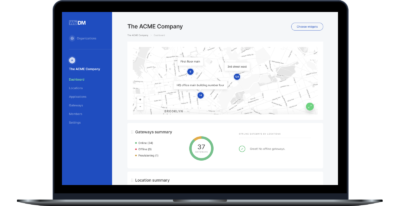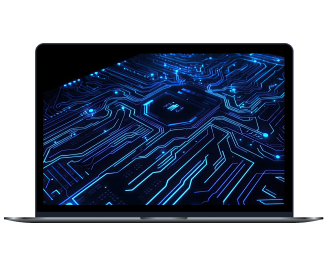IoT network management platform
Learn how we helped RAKwireless develop WisDM, an enterprise SaaS solution for the automated setup and management of large IoT networks.
-
industry
IoT networking
-
Country
China
-
Team size
40
-
Collaboration
April 2020 – present
About the client
RAKwireless is a manufacturer of all classes of IoT devices, from gateways to various sensors, smart modules, and IoT accessories. The company also offers software solutions to manage and maintain networks of IoT devices.

Video testimonial of WisDM, an IoT device management platform
Business context
Before collaborating with Yalantis, RAKwireless successfully served small and midsize companies. They provided an IoT toolset that required users to set up each gateway manually, one by one, via a local management interface. This approach was efficient for a network with a few gateways.
But when RAKwireless decided to enter the enterprise segment, the company needed to create a new scalable and easy-to-use solution for remote management of numerous IoT devices mainly installed in hard-to-access locations.
Solution overview
-
Transforming functional and non-functional requirements into a product development roadmap
Steps we took to roadmap product development:
- Researched the client’s current technical processes, infrastructure, and constraints to select the most suitable technology stack
- Discussed the target audience’s needs with RAKwireless stakeholders and business team to determine non-functional product requirements and the scope of deployment
- Mapped business requirements onto the solution’s functional and non-functional requirements to track project success criteria
- Prioritized the project scope with the client and estimated efforts and risks
- Assisted the client’s design team in forming the most suitable UI/UX strategy
- Formed the MVP for a centralized IoT management system and the scope for the next releases
- Created a development strategy and schedule to share with the client’s team
-
Building the solution architecture
We built a scalable and serverless web architecture along with several custom solutions to accommodate IoT network specifics. We also:
- enabled long-running operations including adding hundreds of sensors to a gateway with job processing and polling mechanisms to meet AWS API timeout requirements
- implemented both asynchronous and synchronous interactions between system components and external integrated systems to enable immediate MVP functionality and prepare for features in upcoming releases
-
Providing value to enterprise clients with SaaS-enabled functionality
To adjust the client’s offering to expectations of the enterprise target market, we ensured:
- full accessibility. Customers can easily and quickly manage their IoT networks and devices remotely via a cloud-based web application.
- self-service management. Customers can update network configurations, monitor device statuses, resolve issues, replace hardware, as well as onboard and manage their own management teams, controlling access permissions without the support team’s assistance.
- quality customer support. The RAKwireless customer support team can promptly find and fix inconsistencies in customers’ IoT networks remotely, without needing to send a local repair team.
-
Conducting performance testing
The product went through several stages of beta testing until the release of the fully functioning product version. Gradually, the user and device bases were growing, and our priority was to ensure the product’s stable performance. To achieve this, our performance testing team:
- set up an automated performance testing environment to provide conditions for stable performance and high product efficiency
- used virtual devices in some scenarios to emulate high loads, as this approach is cost-efficient
- automated the process of collecting testing logs and reporting on test results to identify and fix errors efficiently
Value delivered
Yalantis keeps supporting the product and releasing new production features to enterprise customers. Together with our client, we’ve achieved the following results:
-
Extra value for customers. Aside from providing hardware, WisDM offers RAK customers software to remotely manage gateways worldwide and integrate thousands of devices. Customers can onboard, configure, update, and check the statuses of their gateways, monitor device availability and responsiveness, and see device locations on a map in real time.
-
Enhanced customer support. A communication channel in the WisDM app allows users to easily create tickets. Also, users can provide the RAKwireless support team with temporary remote access to their network infrastructure to solve gateway-related management problems.
-
Platform as a service. Customers can offer WisDM as a service themselves by sharing access to their account and setting up their gateways on-site. Management is done remotely by an expert partner.
-
Improved system security. Customers can use a role management system to establish roles for different network activities, ranging from operational to observer-only.
Need assistance with an IoT network management solution?
Yalantis will help you build a scalable and flexible system for IoT network management and automated gateway governance



